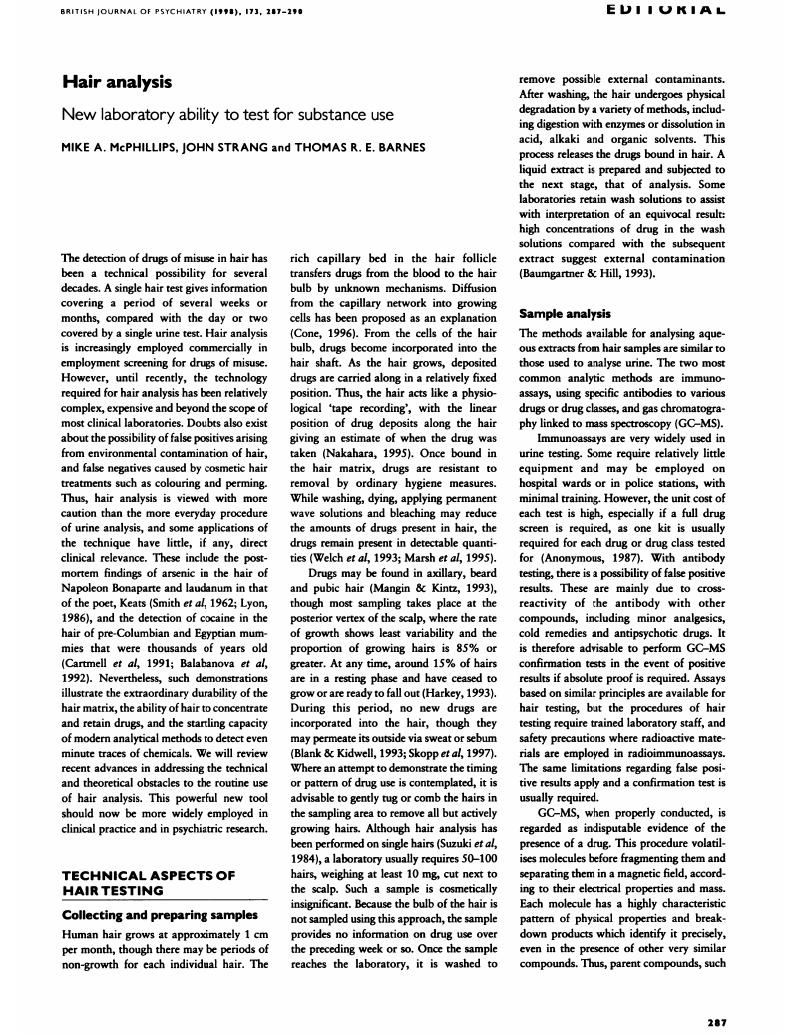Crossref Citations
This article has been cited by the following publications. This list is generated based on data provided by Crossref.
Schuckit, Marc A.
2000.
Drug and Alcohol Abuse.
p.
1.
McEvoy, Joseph P.
2000.
Schizophrenia, substance misuse, and smoking.
Current Opinion in Psychiatry,
Vol. 13,
Issue. 1,
p.
15.
Nyamathi, Adeline
Leake, Barbara
Longshore, Douglas
and
Gelberg, Lillian
2001.
Reliability of Homeless Women???s Reports.
Nursing Research,
Vol. 50,
Issue. 3,
p.
165.
WEAVER, TIM
HICKMAN, MATTHEW
RUTTER, DEBORAH
WARD, JENNI
STIMSON, GERRY
and
RENTON, ADRIAN
2001.
The prevalence and management of co‐morbid substance misuse and mental illness: results of a screening survey in substance misuse and mental health treatment populations.
Drug and Alcohol Review,
Vol. 20,
Issue. 4,
p.
407.
Selten, Jean-Paul
Bosman, Ingrid J
de Boer, Douwe
Veen, Natalie D
van der Graaf, Yolanda
Maes, Robert A.A
and
Kahn, René S
2002.
Hair analysis for cannabinoids and amphetamines in a psychosis incidence study.
European Neuropsychopharmacology,
Vol. 12,
Issue. 1,
p.
27.
Swartz, Marvin S.
Swanson, Jeffrey W.
and
Hannon, Michael J.
2003.
Detection of Illicit Substance Use Among Persons With Schizophrenia by Radioimmunoassay of Hair.
Psychiatric Services,
Vol. 54,
Issue. 6,
p.
891.
2004.
Treating Drinkers and Drug Users in the Community.
p.
409.
Barnes, Thomas RE
and
Dursun, Serdar
2005.
Treatment resistance in schizophrenia.
Psychiatry,
Vol. 4,
Issue. 11,
p.
68.
SHEARER, JAMES
WHITE, BETHANY
GILMOUR, STUART
WODAK, ALEX D.
and
DOLAN, KATE A.
2006.
Hair analysis underestimates heroin use in prisoners.
Drug and Alcohol Review,
Vol. 25,
Issue. 5,
p.
425.
Khalifa, Najat
Gibbon, Simon
and
Duggan, Conor
2008.
Police and sniffer dogs in psychiatric settings.
Psychiatric Bulletin,
Vol. 32,
Issue. 7,
p.
253.
Barnes, Thomas R.E.
and
Dursun, Serdar
2008.
Treatment resistance in schizophrenia.
Psychiatry,
Vol. 7,
Issue. 11,
p.
487.
Haddock, Gillian
Cross, Zoe
Beardmore, Ruth
Tarrier, Nicholas
Lewis, Shôn
Moring, Jan
and
Barrowclough, Christine
2009.
Assessing illicit substance use in schizophrenia: The relationship between self report and detection by hair analysis.
Schizophrenia Research,
Vol. 114,
Issue. 1-3,
p.
180.
Cooper, Gail Audrey Ann
2011.
Hair testing is taking root.
Annals of Clinical Biochemistry: International Journal of Laboratory Medicine,
Vol. 48,
Issue. 6,
p.
516.




eLetters
No eLetters have been published for this article.